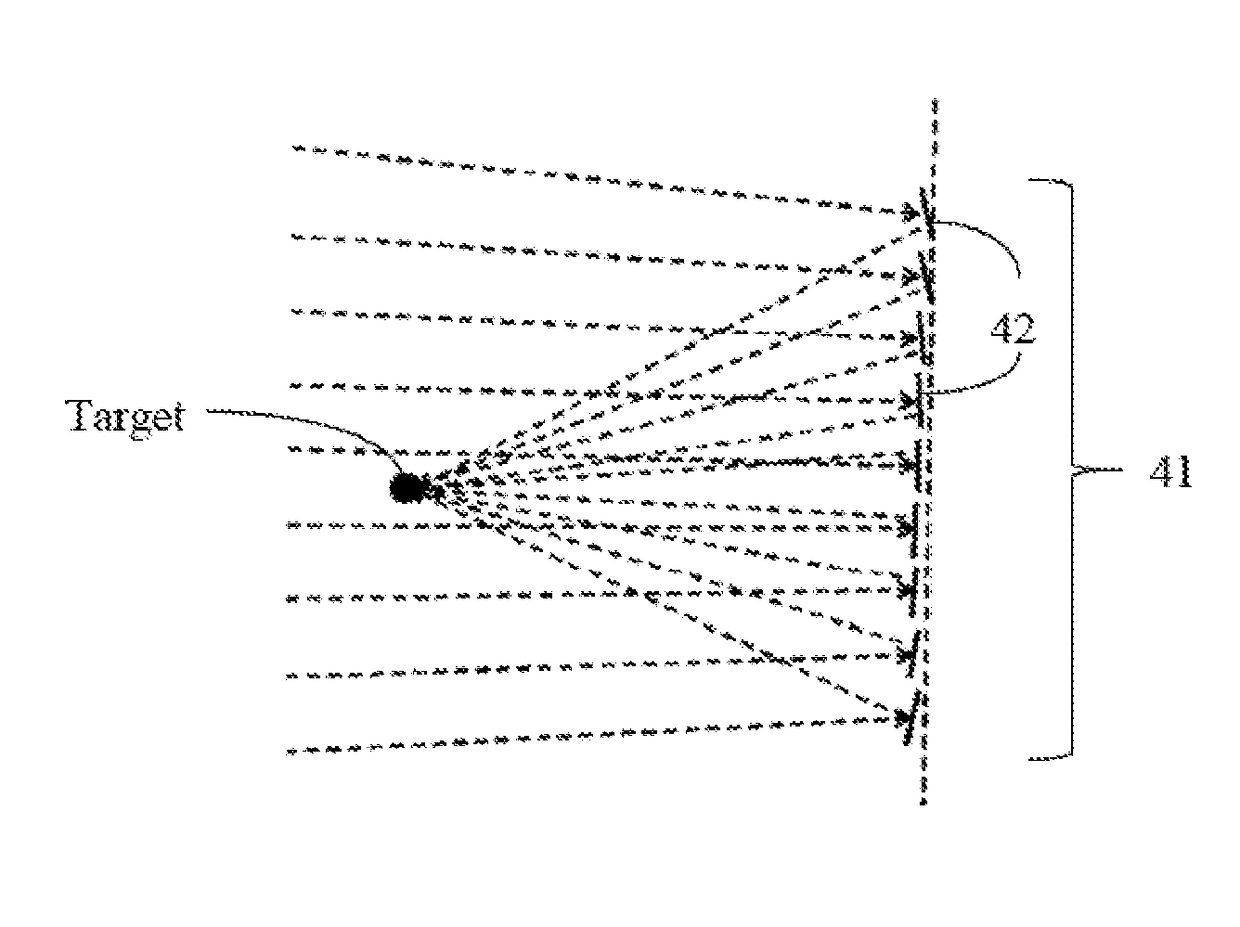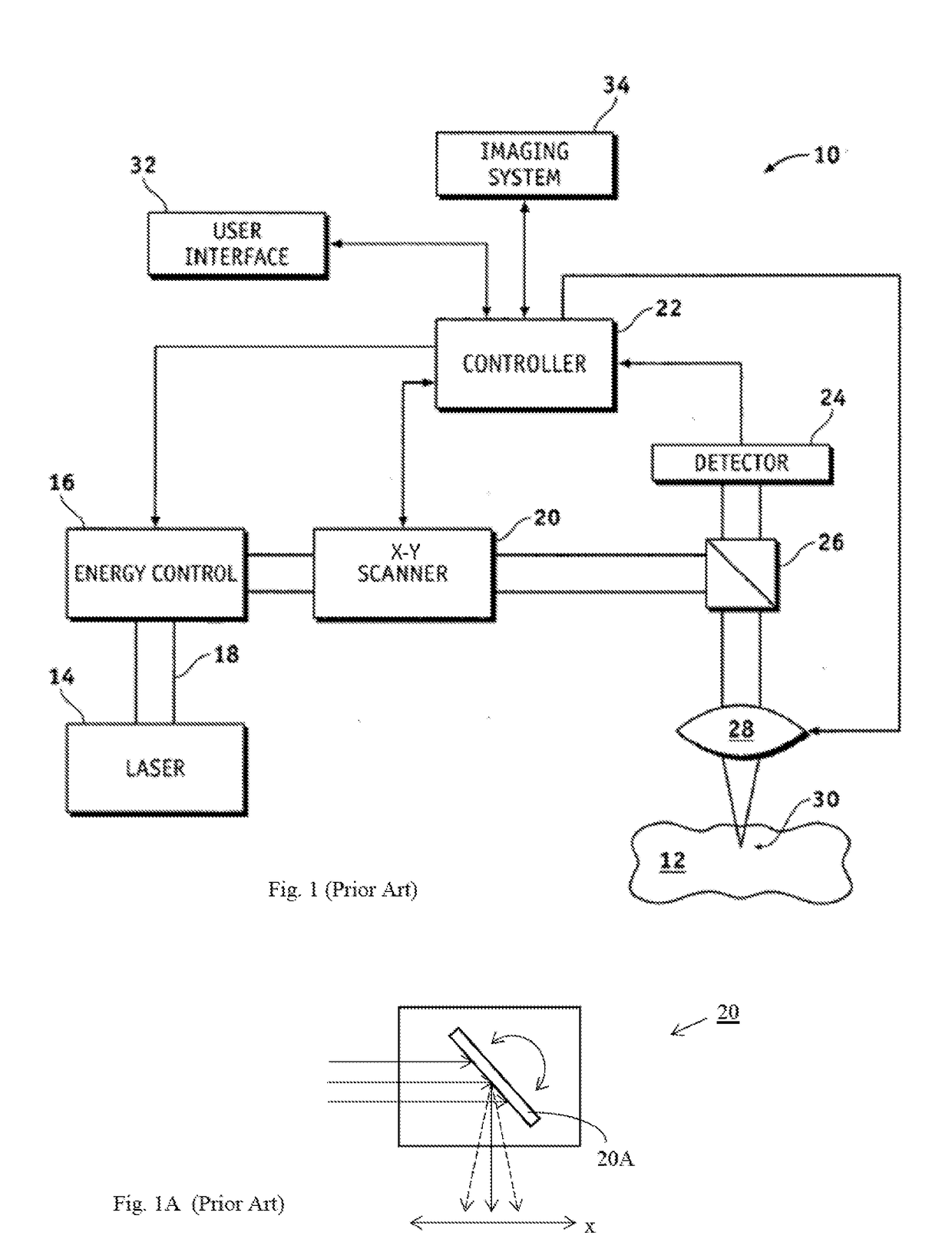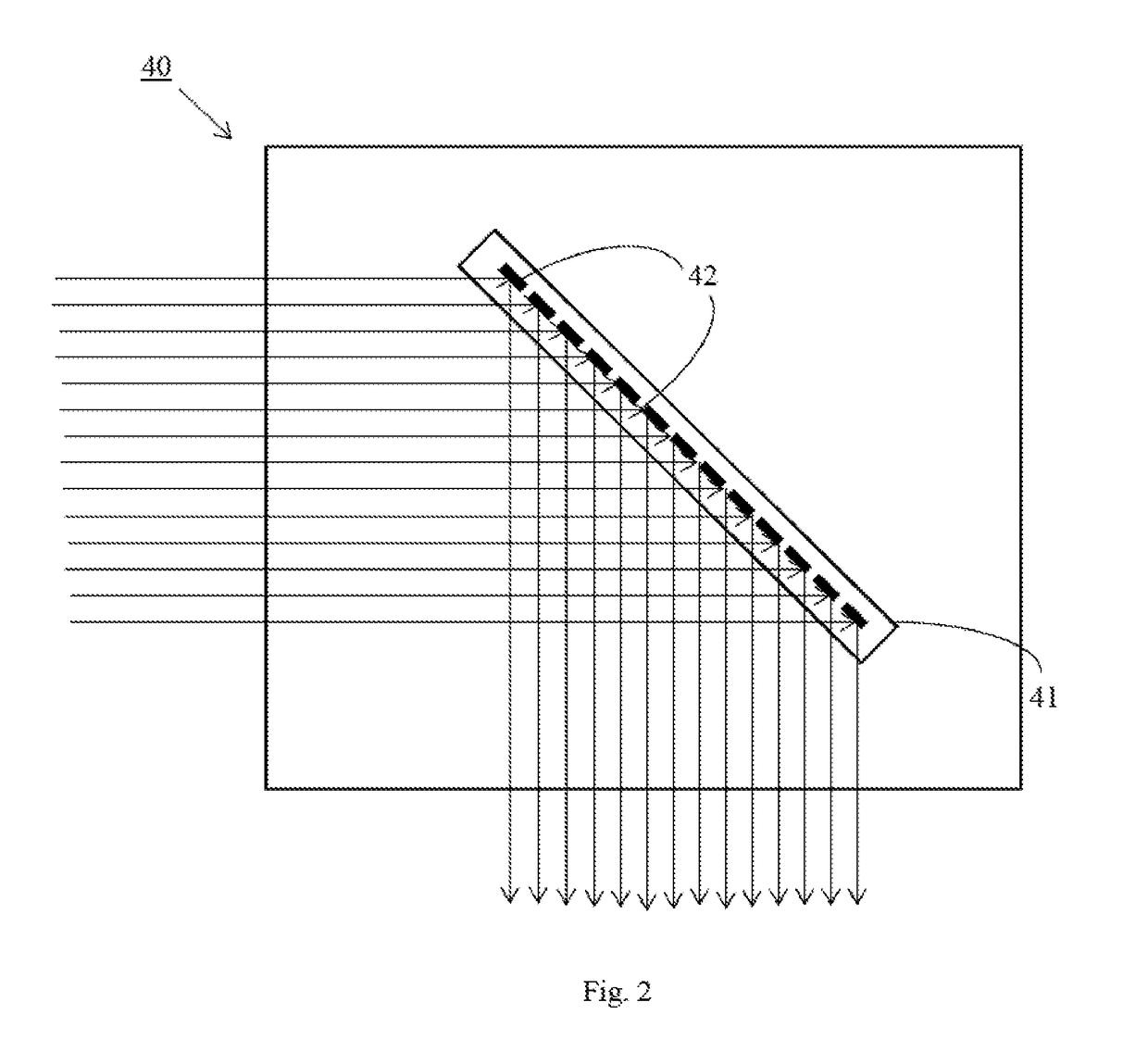Ophthalmic laser delivery apparatus using MEMS micromirror arrays for scanning and focusing laser beam
a laser beam and laser beam technology, applied in laser surgery, eye surgery, instruments, etc., can solve the problems of large focal spot size, single flat mirror cannot correct wavefront aberration, and limit the scan pattern and speed that can be executed, so as to prevent large acceleration during laser scan execution and large inertia
- Summary
- Abstract
- Description
- Claims
- Application Information
AI Technical Summary
Benefits of technology
Problems solved by technology
Method used
Image
Examples
first embodiment
[0032]In a first embodiment, the beam scanner 40 employs two micromirror arrays 41, to scan the laser beam in the x-direction and the y-direction, respectively. The two arrays may have identical structures. In each micromirror array 41, each micromirrors 42 only rotates around one axis, and therefore scans the laser beam in one direction. The two arrays 41 are disposed in series along the optical path, but oriented such that their rotation axes are perpendicular to each other. In this embodiment, all micromirrors 42 in the same array 41 are controlled to rotate synchronously in identical manners; thus, all micromirrors are parallel to each other during scanning. When the input laser beam is a collimated beam, the beam is reflected by the individual micromirrors 42 of the array 41 to form a collimated output beam; as such, the micromirror arrays 41 in this embodiment do not correct the optical aberration present in the laser beam. The output laser beam from the scanner 40 is focused ...
second embodiment
[0034]In a second embodiment, the beam scanner 40 employs a single micromirror array 41 in which each micromirror 42 has two independent orthogonal axes of rotation. The corresponding rotation axes of all micromirrors in the array are parallel to each other. Typically, a dual-axis micromirror has a fast axis and a slow axis. The micromirrors 42 are controlled to rotate around both axes to scan the laser beam in both the x-direction and the y-direction. In this embodiment, all micromirrors 42 in the array 41 are controlled to rotate synchronously in identical manners; thus, all micromirrors are parallel to each other during scanning. Thus, the micromirror array 41 reflects a collimated input laser beam to form a collimated output beam; as such, the micromirror array 41 in this embodiment does not correct the optical aberration present in the laser beam. The output laser beam from the scanner 40 is focused by the focusing optics 28 to a focal spot within the treatment area of the eye....
third embodiment
[0035]In a third embodiment, the beam scanner 40 employs a single micromirror array 41 in which each micromirror 42 has two axes of rotation. The individual micromirrors 42 in the array 41 are independently controlled to rotate to desired angles (around both axes) so as to correct the optical aberration in the laser beam.
[0036]FIGS. 3 and 4 schematically illustrate the effect of aberration correction by a micromirror array. FIG. 3 schematically illustrates a conventional galvo mirror; it schematically depicts a converging input light beam onto a single flat galvo mirror, and the converging beam, after reflection by the flat mirror, forms a focal spot of a relatively large size, due to the optical aberration present in the input light beam caused by of upstream optical elements. FIG. 4 schematically illustrates the same input light beam as reflected by a micromirror array 41, in which individual micromirrors 42 are independently controlled to desired angles around both rotation axes,...
PUM
 Login to View More
Login to View More Abstract
Description
Claims
Application Information
 Login to View More
Login to View More - R&D
- Intellectual Property
- Life Sciences
- Materials
- Tech Scout
- Unparalleled Data Quality
- Higher Quality Content
- 60% Fewer Hallucinations
Browse by: Latest US Patents, China's latest patents, Technical Efficacy Thesaurus, Application Domain, Technology Topic, Popular Technical Reports.
© 2025 PatSnap. All rights reserved.Legal|Privacy policy|Modern Slavery Act Transparency Statement|Sitemap|About US| Contact US: help@patsnap.com



